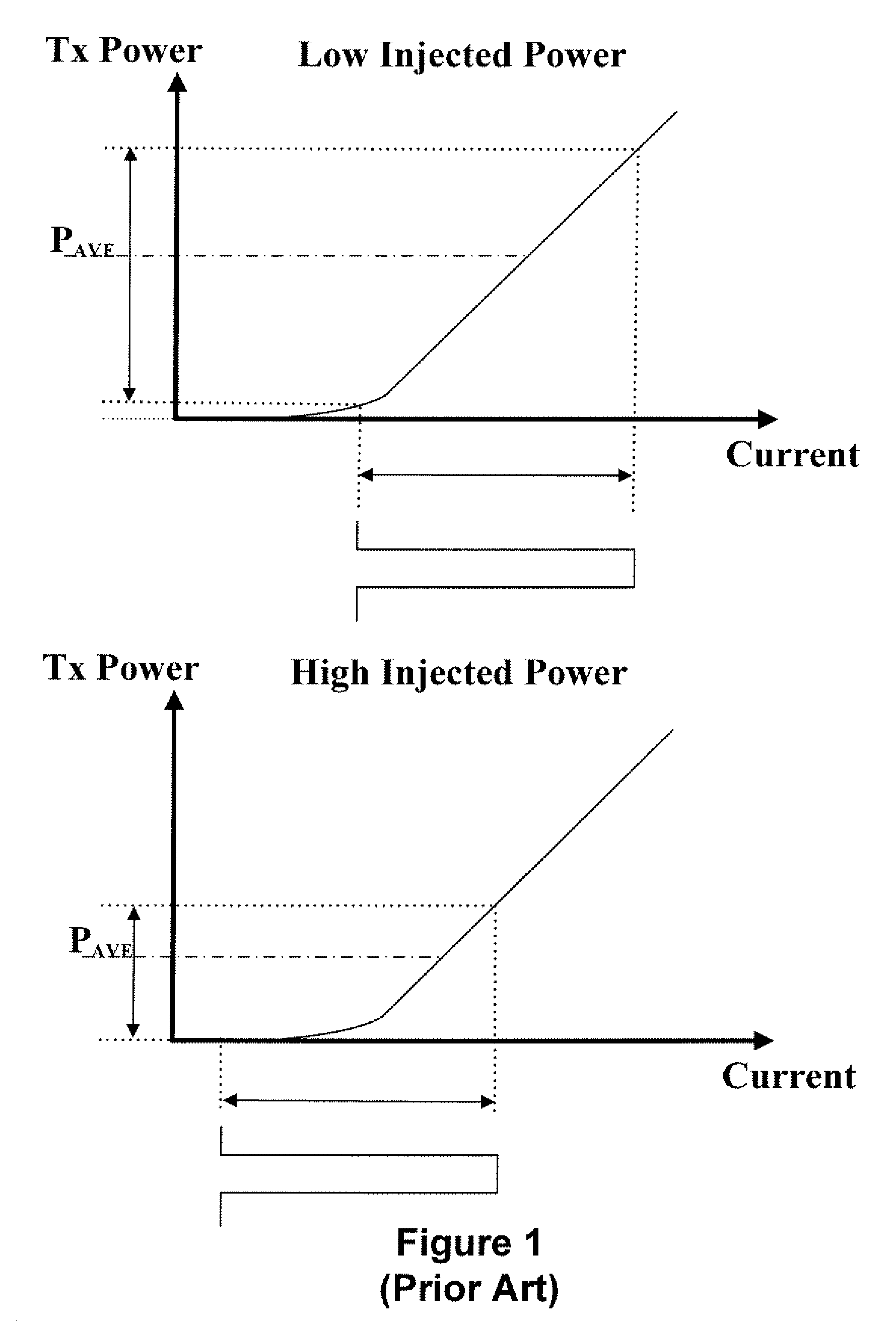Techniques for controlling a light source in a wavelength division multiplexed passive optical network
a technology of wavelength division multiplexing and light source, applied in the direction of wavelength-division multiplex system, transmission monitoring, multiplex communication, etc., can solve the problem that the average output power (psub>avg/sub>) detected by the monitoring photodiode (mpd) may not be an accurate representation of the output power of the light source, and the optical eye may be distorted
- Summary
- Abstract
- Description
- Claims
- Application Information
AI Technical Summary
Benefits of technology
Problems solved by technology
Method used
Image
Examples
Embodiment Construction
[0036]Referring to FIG. 2, there is shown an embodiment of a wavelength division multiplexed passive optical network (WDM-PON) 200 in accordance with an embodiment of the present disclosure. That is, the wavelength division multiplexed passive optical network (WDM-PON) 200 may comprise an optical line terminal (OLT) 204 (e.g., a central office of a telecommunications service provider) coupled to a remote node (RN) 206 (e.g., a multiplexer / demultiplexer) via an optical fiber 210. The remote node (RN) 206 may be coupled to a plurality of optical network terminals (ONTs) 208 via a plurality of optical fibers 212. Each of the plurality of optical network terminals (ONTs) 208 may maintain a connection with one or more customers (not shown) for facilitating telecommunications services between these customers and a telecommunications service provider.
[0037]The optical line terminal (OLT) 204 may include a plurality of transceiver assemblies 214, a multiplexer / demultiplexer 216 (e.g., 1×N w...
PUM
 Login to View More
Login to View More Abstract
Description
Claims
Application Information
 Login to View More
Login to View More - R&D
- Intellectual Property
- Life Sciences
- Materials
- Tech Scout
- Unparalleled Data Quality
- Higher Quality Content
- 60% Fewer Hallucinations
Browse by: Latest US Patents, China's latest patents, Technical Efficacy Thesaurus, Application Domain, Technology Topic, Popular Technical Reports.
© 2025 PatSnap. All rights reserved.Legal|Privacy policy|Modern Slavery Act Transparency Statement|Sitemap|About US| Contact US: help@patsnap.com



